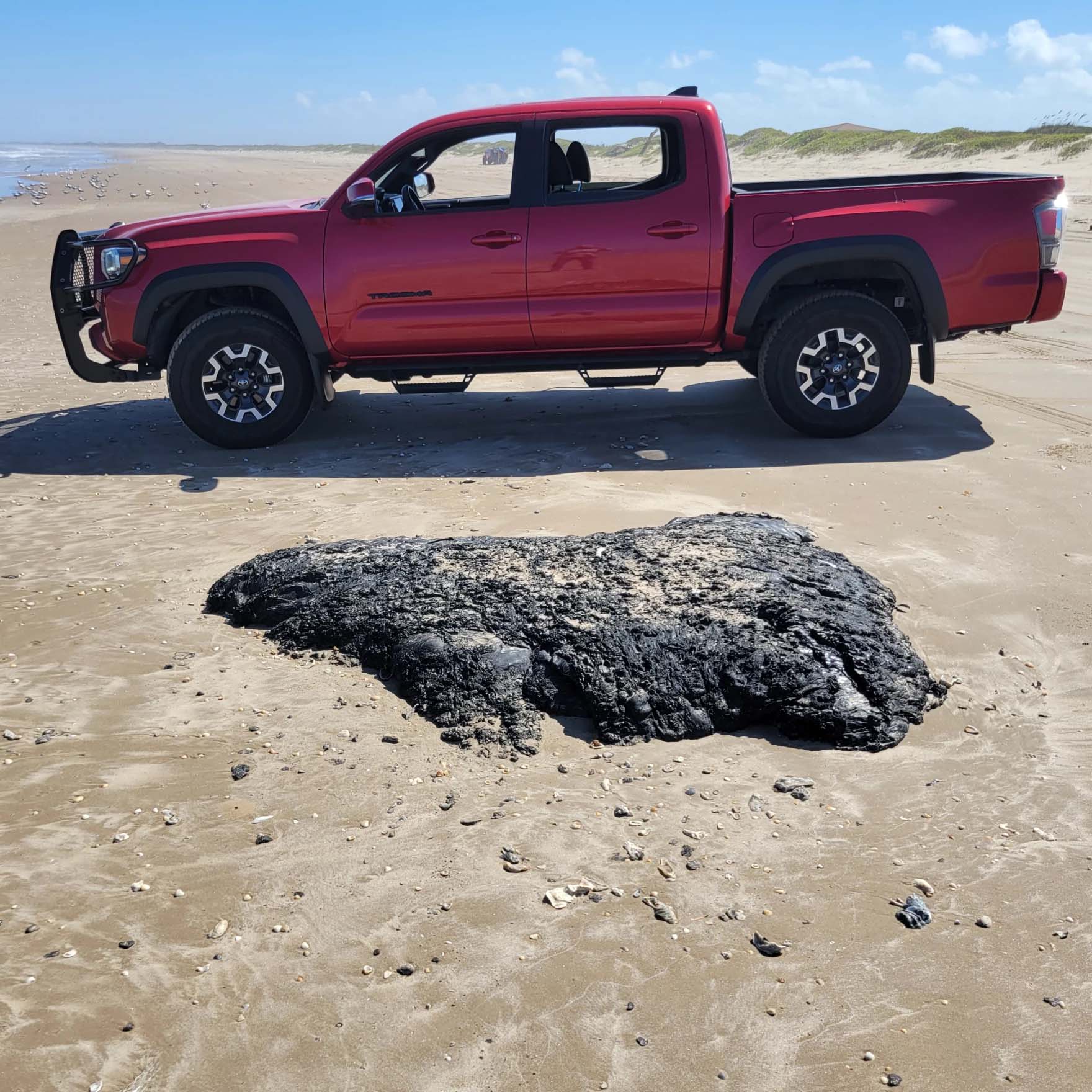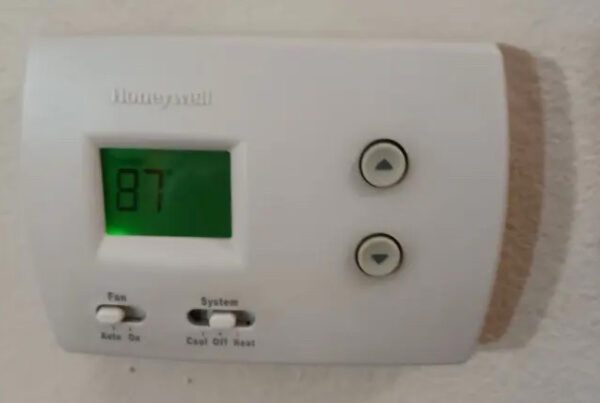From The Texas Newsroom:
Forty-five years ago in June, an oil rig named Ixtoc I exploded off the Bay of Campeche, filling the Gulf of Mexico with nearly half a million tons of oil.
A couple months later, in August 1979, some of that oil started blanketing the beaches of South Padre Island (SPI). The spill, and its arrival on Texas beaches, made national news, remaining in headlines for months on end as the oil slowly made its way to the state. Reports of tar-stained beaches kept people away from the tourist-dependent city.
Tar balls washed up on the Island last month, annoying beachgoers. But unlike the oil from Ixtoc’s spill, the tar did little to deter people from visiting Texas coasts. Now, with little tar remaining, officials expected the beaches to be mostly clear through the 4th of July weekend, including when Hurricane Beryl made landfall.

Beachgoers at Isla Blanca Park on South Padre Island during the last week of June 2024.
Gaige Davila / The Texas Newsroom
The aftermath of Ixtoc I
Out of work with no tourists to serve, hundreds of Island residents took to shoveling the tar out of the beach into the fall of 1979, as part of a multiagency clean up effort.
When oil from Ixtoc I landed on Texas beaches, it was less than 1% of the total oil that came from the spill, or 4,000 metric tons. Six percent of the oil, nearly 30,000 metric tons of it, landed on Mexican beaches. A study from 1981 estimated that 120,000 metric tons of the oil from Ixtoc I sank to the bottom of the Gulf.
The Ixtoc I spill was then the largest oil spill in history, seconded only by the BP Deepwater Horizon spill 30 years later. The oil from both returns to the coast every so often. What happens more often, though, is oil naturally seeps from the bottom of the Gulf of Mexico and makes its way to Texas’ shores.
“There’s so much pressure of the water of the Gulf on the seafloor that it gets squeezed up and it comes up either as asphalt or tar,” Cameron County Marine Extension Agent Tony Reisinger said. “And it’s out there all the time, and usually it shows up in the spring and summer, because currents tend to change.”
A 2003 study estimated that there are more than 600 natural oil seep sites in the Gulf of Mexico, producing what would amount to 1 million to 5 million barrels of oil every year.
That oil will mix with sand and tumble its way to beaches, forming globs of various sizes. Particularly large pieces, which look like pieces of granite submerged in the sand, sometimes wash up in Texas, too, as one did at Boca Chica Beach last August. Centuries ago, the Karankawas, one of several indigenous tribes that lived in the Rio Grande Valley, used the tar to line baskets and pottery.

A large piece of tar on Boca Chica Beach in August 2023.
Courtesy Photo / Tony Reisinger
The Ixtoc I oil spill kept people away from SPI when it happened, but tourists this summer haven’t been deterred by returning tar. South Padre Island’s Convention and Visitors Bureau Executive Director Blake Henry said that tourism was “largely unaffected” by the tar this past month.
This is partly due to the city’s Shoreline Department clearing tar from the beaches at night in early June. Though there are still streaks of tar on boardwalks, beach accesses and sidewalks, the beaches are largely clear.
The city worked with the Texas General Land Office’s (GLO) regional office in Brownsville, which has its own coastal oil response unit.
This year and last saw more tar than usual, according to Raymond Oliveira, the GLO’s Regional Director of oil spill prevention and response in South Texas. Tar usually makes its way to Texas beaches during the summer months, he said, with most of it coming from tar seeps.
The GLO sent samples of the tar found on the Island’s beaches to Texas A&M University in College Station for analysis. The analysis came back identifying the substance as weathered crude oil, likely from the bottom of the Gulf of Mexico, and not from a spill.
“When there is a spill, it leaves a fingerprint on that oil,” Oliveira said, explaining how the GLO and Texas A&M are able to confirm the origins of the tar that beachgoers have seen in recent months.

Streaks of tar from beachgoers scraping their shoes along beach access walls on South Padre Island.
Gaige Davila / The Texas Newsroom
The tar will eventually make its way deeper into the sand and eventually into the dunes, as tides and wind push and pull sand away from the shoreline. The tar can naturally dissipate in other ways, too, thanks to bacteria that eats it.
The beach also likely saw a large amount of tar this summer because of currents. Texas gets significant debris, whether tar or trash, from changing currents and a prevailing southeast wind. Those currents can bring tar to the state’s, and Mexico’s, beaches, or sometimes to the middle of the Gulf.
Ultimately, it was a changing current in September 1979 that sent Ixtoc’s oil out to the Gulf and away from South Padre Island. Half a year later, Ixtoc’s leak was capped. In June, Tropical Storm Alberto’s wind initially brought some more tar onto the beaches, but it has since washed away.
Beryl’s impact
Forecasters predicted Hurricane Beryl could make landfall on the South Texas coast or northeastern Mexico, and Oliveria predicted a possible wash up of more tar as tides change heading into the weekend.
That tide change will bring the Gulf’s waters and any tar that’s inside it closer to the dune line. As of now, there’s trace amounts of tar on the beach.
Reisinger said any beachgoers who come across tar can use baby oil and dish soap to scrub it off the skin. For shoes or sandals, use WD-40 to loosen the tar and a toothbrush to scrub it off.














